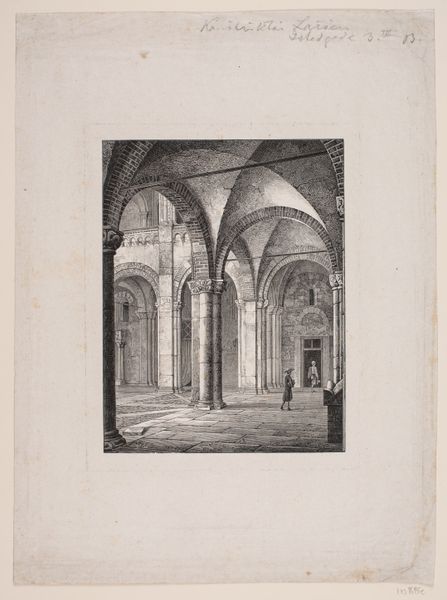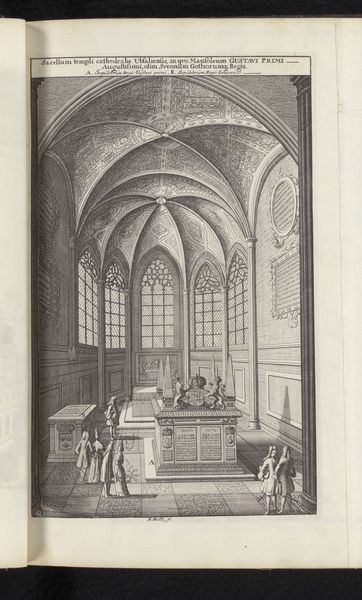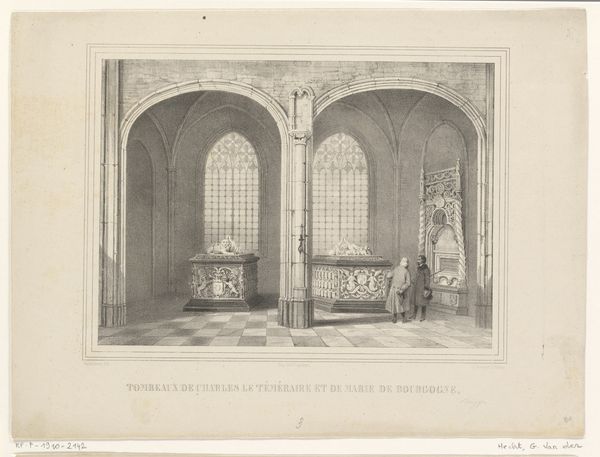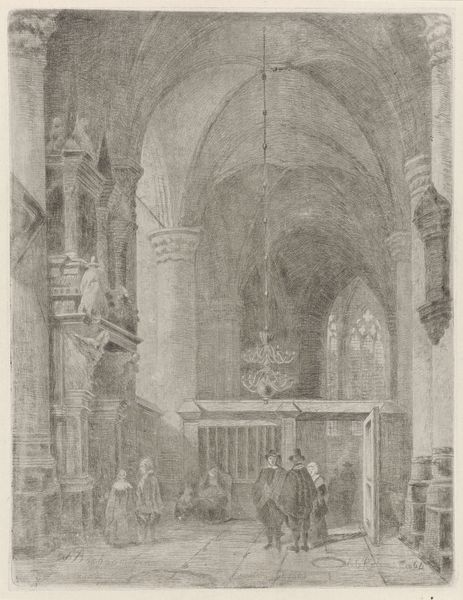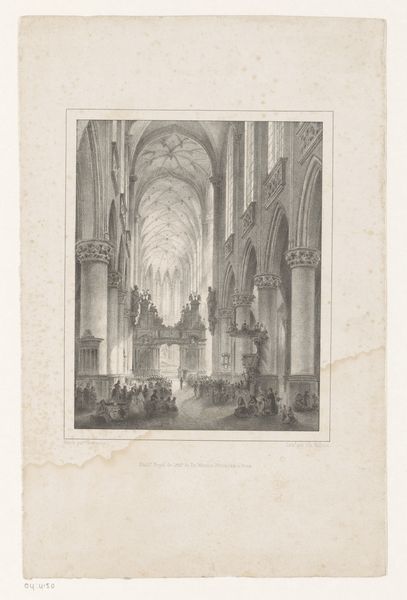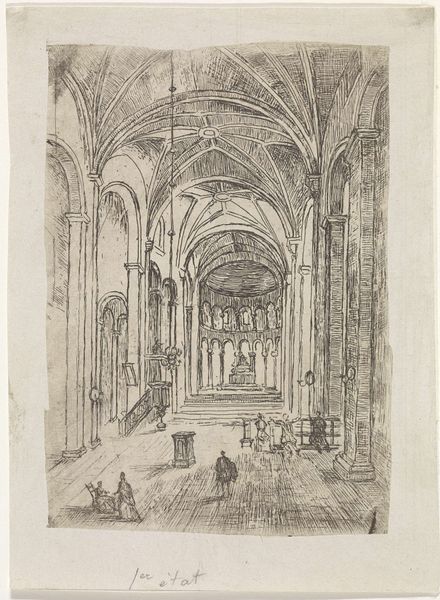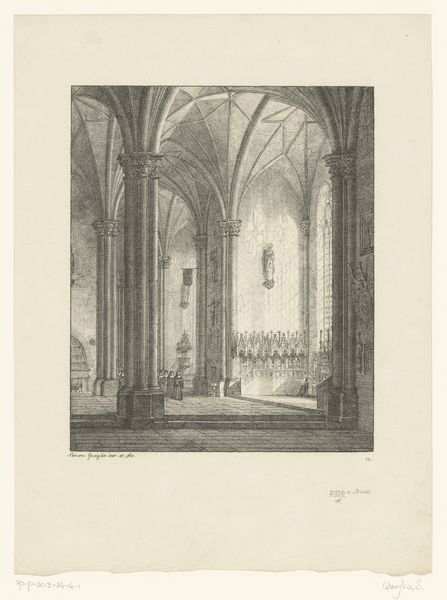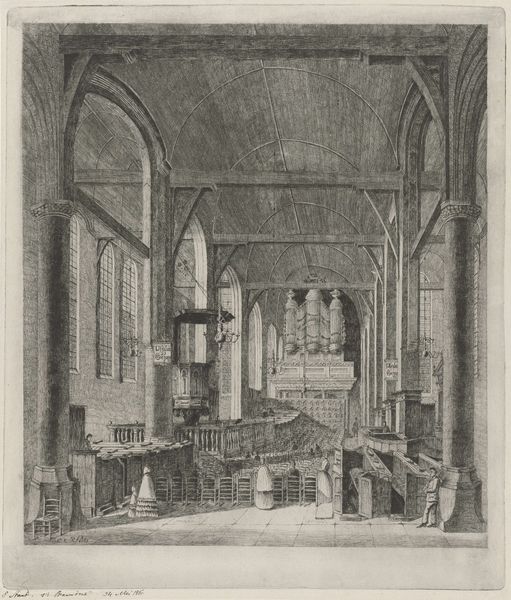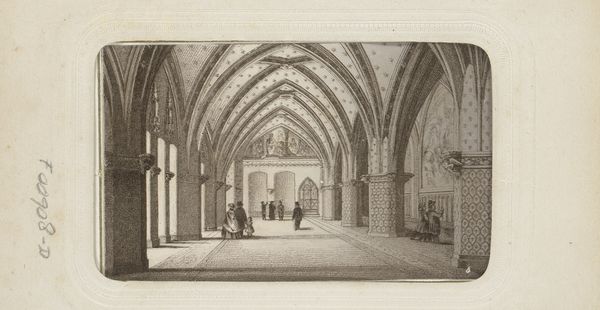
drawing, print, ink, engraving
#
drawing
# print
#
old engraving style
#
historical photography
#
ink
#
romanticism
#
19th century
#
cityscape
#
genre-painting
#
engraving
Dimensions: height 313 mm, width 230 mm
Copyright: Rijks Museum: Open Domain
Editor: Here we have "Prentenkraam in de kloostergang van de Dom in Utrecht," an 1830 engraving by Joannes van Liefland. The scene depicts a print stall within what looks like a cathedral cloister, teeming with people browsing and buying. It feels very much like a snapshot of everyday life, but within this grand, historical space. What do you see in this work that might not be immediately obvious? Curator: This engraving is fascinating precisely because it intersects public and private spheres within the burgeoning commercialism of the 19th century. We see the Dom, a symbol of religious and civic authority, temporarily repurposed as a marketplace for printed images, making art accessible to a broader public. Consider how this democratization of art challenges traditional power structures where art was only available for elites. What narratives about class and accessibility are at play here, do you think? Editor: That’s an interesting point. I hadn't considered the disruptive potential of making art accessible to more people. The casual gathering of people seems so normal now, but maybe then it was a subtle shift in who had access to culture and knowledge. Curator: Exactly. Think about the content of those prints. They were likely reproductions of paintings, political cartoons, or landscapes – visual information circulating and shaping public opinion. This bustling print stall wasn't just about commerce; it was about disseminating ideas. To me, it begs questions about how we continue to make information accessible today, who controls its flow, and whose voices are amplified or marginalized. How does this resonate with contemporary dialogues about media representation and social justice? Editor: That connection really broadens my perspective. It’s not just a historical scene; it’s a visual representation of a power dynamic still relevant today. Thanks, that gives me a lot to think about. Curator: Indeed. Reflecting on history provides essential critical tools for intervening in the present. It all circles back and brings awareness.
Comments
No comments
Be the first to comment and join the conversation on the ultimate creative platform.

